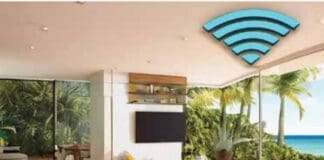 By Julie McConnell, UF/IFAS Extension
By Julie McConnell, UF/IFAS Extension
When I was writing Part II of this series last month, I had planned to shift to annual flowers, but I have been enjoying hummingbirds visiting my garden the last few weeks so much I decided to share some great plants for those feisty visitors instead.
 Hummingbirds consume large amounts of energy which needs to be replenished frequently throughout the day. It is estimated that an adult feeds every 10-15 minutes during the day consuming approximately half their body weight at each feeding! To support hummingbirds in your garden, offer a variety of attractive nectar plants with blooms from spring to fall.
Hummingbirds consume large amounts of energy which needs to be replenished frequently throughout the day. It is estimated that an adult feeds every 10-15 minutes during the day consuming approximately half their body weight at each feeding! To support hummingbirds in your garden, offer a variety of attractive nectar plants with blooms from spring to fall.
A few of my favorite plants that are low maintenance and attract hummingbirds are salvia, firecracker plant, and bottlebrush. These plants all have tubular flowers with nectar at the base which limits which types of animals can feed on them effectively, giving hummingbirds with their long beaks an advantage.
Salvia
Salvia is a genus that contains almost 1,000 species found across the globe. These versatile plants may be grown as annuals, herbaceous, or woody perennials depending on the species. A few salvias that grow well in Northwest Florida and attract hummingbirds are:
Scarlet Sage (Salvia coccinea) and Autumn Sage (S. greggii) are native to Florida, 1-2 feet tall, red, pink, or white flowers spring to summer, perennials in Zone 9.
Mexican Sage (Salvia leucantha) 2-3 feet tall, purple and white velvety flowers late summer to fall, perennial in Zone 9.
Firecracker Plant
Firecracker Plant (Russelia equisetiformis) has an interesting weeping habit with needle-like linear leaves and is covered with tubular red flowers from spring to summer. Firecracker Plant gets 2-4 feet tall and 3-5 feet wide. It is a perennial in Zone 9 and may remain evergreen if winter is mild.
Bottlebrush
Bottlebrush (Melaleuca citrina formerly Callistemon citrinus) is an evergreen small tree that blooms from spring to late summer. Blooms are inflorescences composed of 20-40 individual red flowers. Bottlebrush is tolerant of drought once established and requires well-drained soil; over watering or poorly drained soil leads to root rot.
These are just a few of the many plants we can grow to attract hummingbirds to our garden. Features to look for are plants with tubular flowers blooming from April to November. Although red and orange are colors most associated with hummingbirds, they will visit other colors such as the purple salvia mentioned previously. Staggered bloom times and plant diversity are good strategies to attract all types of wildlife to your garden, so keep expanding your plant palette!
For more information on these plants check out the links below:
Hummingbirds of Florida https://go.ufl.edu/3syvrkm
UF/IFAS Gardening Solutions Salvias https://go.ufl.edu/we63soi
UF/IFAS Gardening Solutions Firecracker Plant https://go.ufl.edu/y3yr6i0
UF/IFAS Gardening Solutions Bottlebrush https://go.ufl.edu/5cvurf2
An Equal Opportunity Institution. UF/IFAS Extension, University of Florida, Institute of Food and Agricultural Sciences, Andra Johnson, Dean. Single copies of UF/IFAS Extension publications (excluding 4-H and youth publications) are available free to Florida residents from county UF/IFAS Extension offices.





















































